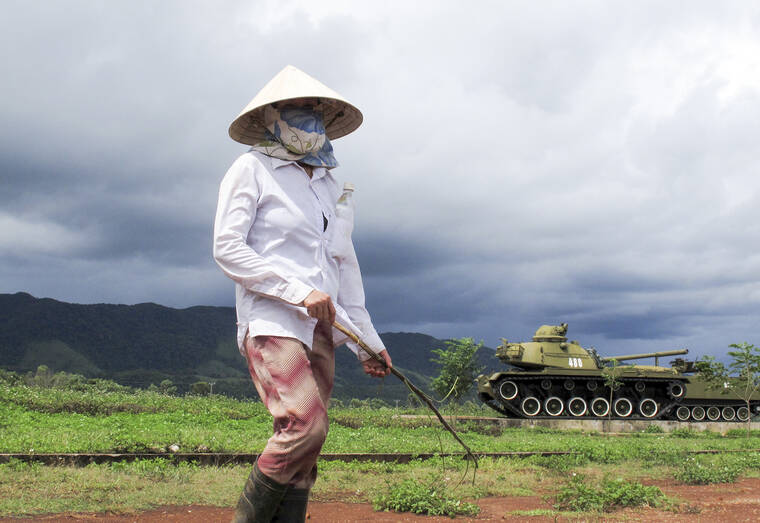21/03/2024 Vietnam, Bac Trung Bộ, Quang Tri, Huong Hoa, Khe Sanh
“If you ever come across anything suspicious like this item, please do not pick it up, contact your local law and/or enforcement agency for assistance”
By SETH MYDANS NYTimes News Service
On a visit to the former battlefield of Khe Sanh, the scene of one of the bloodiest standoffs of the Vietnam War, the only people Chuck Searcy encountered on the broad, barren field were two young boys who led him to an unexploded rocket lying by a ditch. One of the youngsters reached out to give the bomb a kick until Searcy cried out, “No! Stop!” “It was my first encounter with unexploded ordnance,” Searcy said of that moment in 1992. “I had no idea that I would be dedicating my life to removing them.” It was not Searcy’s first encounter with Vietnam. He served there as a soldier in 1968, the same year as the battle of Khe Sanh, and came away disillusioned. As a U.S. Army intelligence analyst, he had had access to a full range of raw information, from the enemy’s body counts to exaggerated claims of American progress. “We got to see almost everything,” he said in a recent interview. “And I saw that our friends back home were being given information that was not just misleading but deliberate lies. “That shocked us as innocent young men,” he added, and they began to feel that the system was broken. By the time his one-year tour of duty ended, Searcy found himself doubting not only the war but also his own character. “I’ve really sometimes wondered if my timidity or refusal to step up and say this was wrong, whether this was a moral failure on my part,” he said. “It was a worry that made me feel that I was failing in a duty that I had as an American.” That sense of duty has propelled him to commit his life to redressing one of the most deadly legacies of the war: the millions of unexploded bombs and land mines that continue to kill and injure people every year. Now 79 and living in Hanoi, Searcy is perhaps the most widely known American veteran among Vietnamese, often giving local interviews and making statements that stress his anti-war views, and helping bend U.S. policies toward engagement with Vietnam. Chuck was one of the pioneers among the veterans in normalizing relations between the two countries,” said Hoang Nam, a senior government official in Quang Tri province who met Searcy just out of college. Together, the two men founded Project Renew, based in Quang Tri, which since 2001 has been deploying teams of de-miners, teaching schoolchildren how to stay safe and providing prosthetics and job training to victims. Searcy said he was often asked what motivates his commitment to the welfare of postwar Vietnam. It is not guilt, he said. Rather, it’s a sense of responsibility to try to remedy the damage his country has caused. The phrase he particularly embraces is a Marine Corps directive that involves clearing away spent metal shell casings on a firing range: policing up your brass. Searcy is, both figuratively and literally, policing up the deadly ordnance that the Americans left behind throughout Vietnam. Quang Tri province, the site of Khe Sanh and on the border with the Ho Chi Minh Trail, is just below the line that divided South and North Vietnam. It was the most heavily bombed region in Vietnam, Searcy said.
Photo-Source: hawaiitribune-herald.com
Tuy đã trải qua thời gian dài vùi sâu dưới lòng đất nhưng chúng vẫn cực kỳ nguy hiểm, có thể phát nổ và gây thiệt hại đến tính mạng, tài sản của nhân dân bất cứ lúc nào.
Dear editors, Biography of a bomb is aimed at highlighting the danger caused by unexploded bombs. Moreover, the most important aspect is that we work completely non profit, what drives us is raising awerness about this topic. We make use of your pictures and articles, but we need them to put a context in how findings are done. We trust in your understanding. We will (and we always do) cite the source and the author. We thank you for your comprehension.





